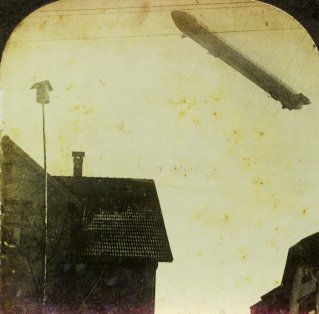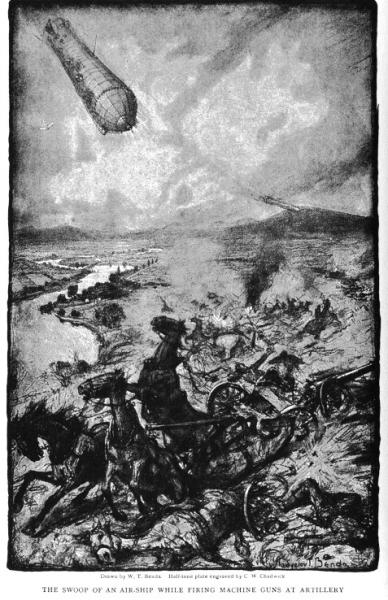Aerial War, 1909
Today, we anticipate aerial warfare. The University of Houston's College of Engineering presents this series about the machines that make our civilization run, and the people whose ingenuity created them.
I'll read you the last paragraph of an article that came out in 1909. Airplanes were then only six years old, and dirigibles were in their infancy. The writers say:
... [dirigibles will change] the history of nations ... if aerial warfare is permitted to exist. But will it be permitted? [Artillery wars] a mile above the earth ... where the defeated plunge [in masses] of charred pulp, will become ... too spectacularly horrible ... Will civilization permit it to exist? Or does this new machine mean the end of war?
Well, we found out what would and wouldn't be permitted, all right. Aerial warfare was indeed permitted. It hardly involved dirigibles. And it did not put an end to war.
The writers tell of secret German tests of a new Zeppelin outfitted with a machine gun that fires exploding shells. It's those new machine guns that most worry the writers. They recall how General Kitchener held off waves of the Mahdi's attacking troops at Omdurman eleven years before. Kitchener used the new Maxim gun to slaughter row after row of attacking soldiers.
The writers make light of bombs, or aerial torpedoes, as they call them. Bombs, they feel, would be impossible to aim. They see dirigibles flying at a height out of range of enemy fire and spraying enemy troops with exploding machine gun bullets from above. Navies, they observe, will instantly become obsolete. And in all this they don't even mention the new airplanes.
Five years later the long-awaited World War broke out. Dirigibles entered the fray at first and did a little damage in London; but Allied airplanes soon put them out of business.
The authors were correct on one point. It was the machine gun that made WW-I so terrible. When machine guns sprouted on airplanes, they made aerial warfare every bit as bad as the article predicted. But the most telling point was the reference to Kitchener at Omdurman. Generals should have seen what those new guns would do down on the ground. Within days, they froze the classical military maneuvers of WW-I into a static line of parallel trenches. There they chewed up 5000 men a week, not including a few pitched battles that ate a half million at once.
The prophecy about navies is still unfolding. Navies survived WW-I. But in WW-II they were increasingly wed to the aircraft carrier. Not until the Falklands war did the vulnerability of ships to aerial missiles seem to become complete.
So if you want to make any historian nervous, just ask him to extrapolate the past into the future. He knows that, like these authors, he'll get some things right and other things wrong. History, after all, is shaped by technology; and technology is as unpredictable as the human spirit that drives it.
I'm John Lienhard, at the University of Houston, where we're interested in the way inventive minds work.
(Theme music)
Dienstbach, C. and MacMechen, T.R., The Aerial Battleship. McLure's Magazine, August, 1909 (reprinted in Early Flight (F. Oppel, ed.). Seacaucus, NJ: Castle, 1987.)
The unedited text of the closing paragraph goes like this:
That the new machine of war will cause great changes in the history of nations cannot be doubted -- if aerial warfare is permitted to exist. But will it be permitted? War a mile above the earth, between corps of artillery firing into huge bodies of inflammable gas, where the defeated plunge down to the ground a mass of charred pulp, will become a thing too spectacularly horrible for conception. Will civilization permit it to exist? Or does this new machine mean the end of war?

(Image courtesy of Sims McCutchan)
Stereopticon image of a WW-I British dirigible

(Image courtesy of Sims McCutchan)
Stereopticon image of a WW-1 dirigible passing over a German town

(From the 1910 Century Magazine)
A 1910 anticipation of aerial warfare